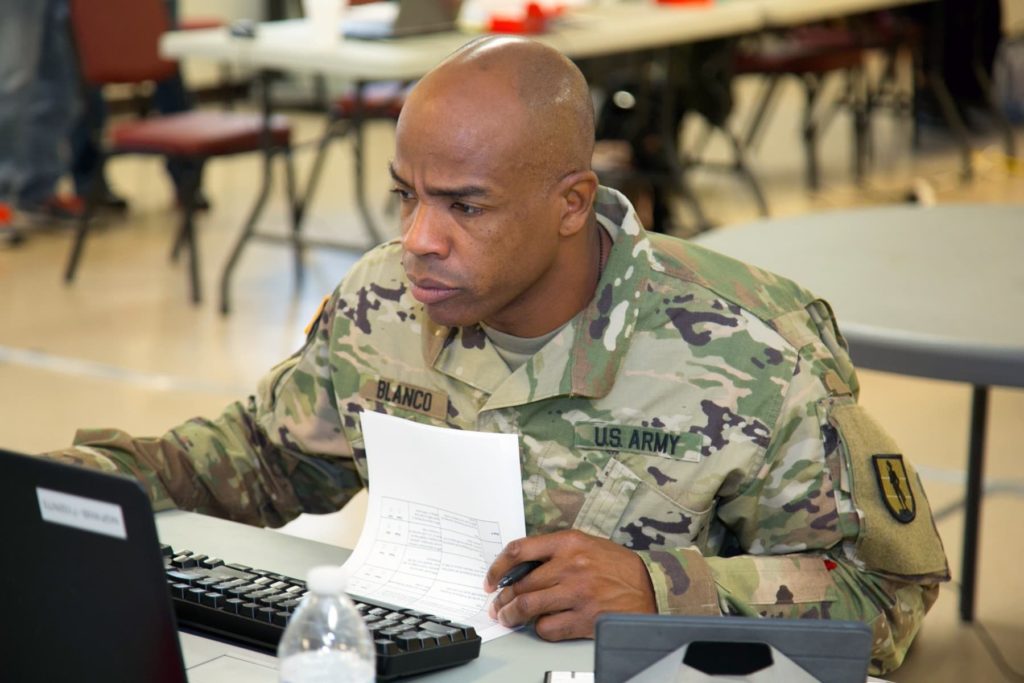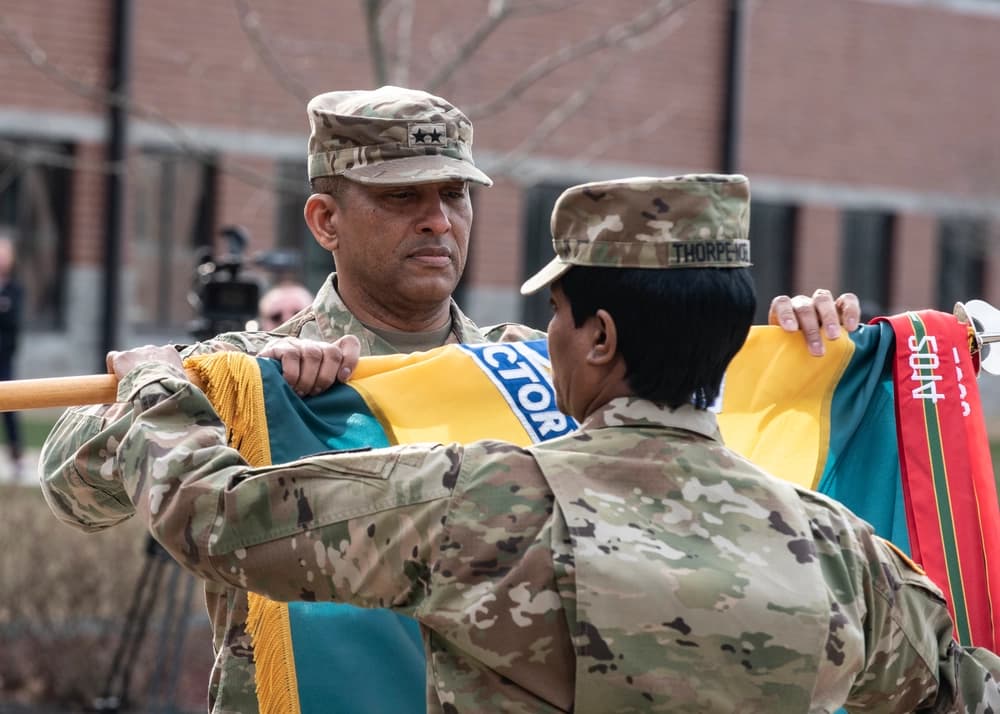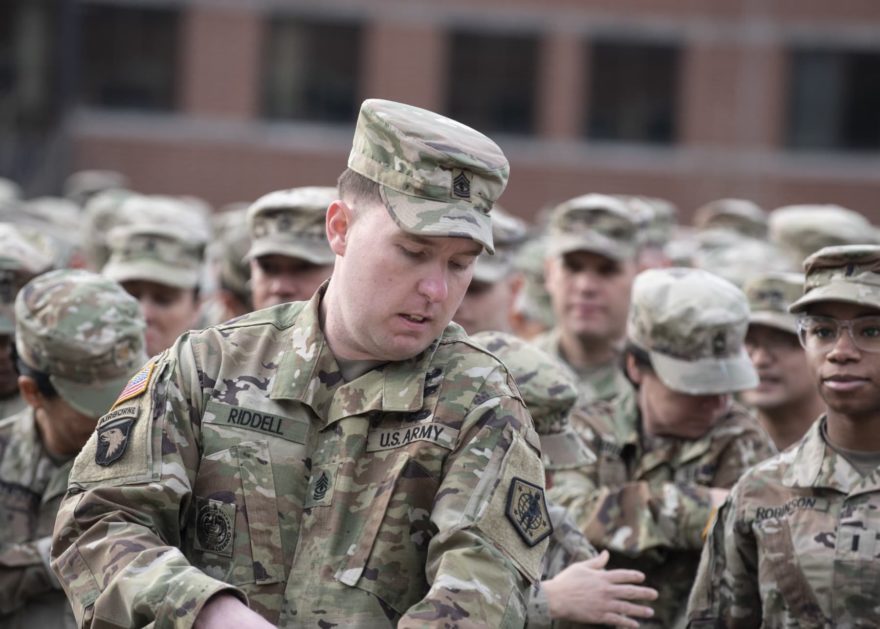The Army HRC recruits, trains, and retains all Army Soldiers. It also promotes the promotion of Soldiers to command positions. The HRC is a field operating agency of the Office of the Deputy Chief of Staff for Personnel, G-1. It provides career guidance and support for Regular Army and United States Army Reserve Soldiers from basic training to retirement. HRC, Army Human Resources Command is the Army’s direct reporting unit (DRU) focused on improving the career management potential of Army Soldiers from basic training through retirement. It supports the commanders of the Regular Army, the United States Army Reserve, and the United States Army National Guard in their management of enlisted personnel.
The command conducts strategic talent management, personnel distribution, information technology, and Soldier programs & services to enable Army readiness. It also supports the commanders of the Individual Ready Reserve, the Standby Reserve, and the Retired Reserve. Army HRC was created in 2003 when PERSCOM, the Army Total Army Personnel Command in Alexandria, Virginia, and AR-PERSCOM, the Army Reserve Personnel Command in St. Louis, Missouri, merged into one command. In 2011, under the Department of Defense 2005 Base Realignment and Closure Commission, HRC moved to a state-of-the-art Fort Knox, Kentucky facility.
There are about 40 operational elements nationwide under the command of the Army HRC commander, who is a senior officer in charge of all enlisted personnel. He is responsible for assisting the Deputy Chief of Staff for Personnel, G-1, and his staff in the management of the Regular Army and the Reserves. As HRC Commander, he leads Army HRC in integrating the Army’s Human Resources System-Army with the Integrated Personnel and Pay Systems-Army to provide a comprehensive, multifaceted approach to managing human resources. He is responsible for establishing, implementing, and monitoring all organizational human resource policies and programs.
At the top of the hierarchy is a Branch Chief, who is an experienced and successful post-command Lieutenant Colonel or Captain, often with years of prior HRC experience. The lower ranks are managed by Assignment Officers, who are junior officer-level managers with a proven track record of success in their assigned area of responsibility.
The work that 42A’s do at HRC is a complex and very detailed process. It is a very important part of the DA system and requires extensive training and preparation for each assignment. Each Request for Order (RFO) must be staffed through several other sections before it is released to the requesting Army element. This process helps ensure that all assignments are in compliance with federal law and Army personnel policy.
What’s the purpose of Army HRC?

HRC conducts strategic talent management, personnel distribution, IT, Soldier programs & services – enabling Army readiness. The mission of HRC is to provide and deliver high-quality professional Army workforce solutions, focusing on improving the career management potential of our Active and Reserve Soldiers, as well as ensuring accountability, integrity, efficiency, and good order and discipline for all our people.
We do this by building the highest performing teams, using best practices, and leveraging the latest in technology and management science to ensure that we have the resources we need to deliver high-quality services for our Army and their Soldiers. Our HRC team is dedicated to delivering superior customer service through transparent engagement, a consistent and proactive approach to ensuring the success of our soldiers. This includes developing an effective and engaging communication strategy to help you engage with your Branch Office and the entire HRC team.
As part of this approach, we are implementing several tools to assist you with your personal and assignment preferences. These include: Preferences for Assignment Location – When you submit your preferences for assignment locations, you will be able to select up to 6 options (3 CONUS and 3 OCONUS installations). Two of these locations will be divisional installation, and the other three will be non-divisional.
You can also indicate whether you would like to volunteer for specific duty interest positions, such as Drill Sergeant, Recruiting, and Airborne. These selections may be used by HRC when determining your assignment to support the needs of the Army. You can decline the use of these options, and HRC will determine your assignment based on your preference for duty locations and the needs of the Army.
BNR Memos – If a Brigade Commander or Commanding General signs a memo for the release of a billet and that memo is received well before the next Distribution Cycle, HRC will be able to honor it. However, if we receive that memo at the last minute and the unit has not authorized the billet or the position does not make sense for the officer, we will not honor it.
Army HRC Portal

The Army HRC portal provides a convenient one-stop shop for all your human resources needs. It features a number of important programs and services that support your career in the Army and beyond. To navigate the site, you’ll need a DSLogon username and password. These can be retrieved at the DMDC website if you don’t have them.
Your DSLogon username is the same as your military identification number (MAIN), except that it is in lowercase. Click the “Retrieve DSLogon Username” link on the navigation bar to retrieve it. After you have your DSLogon username, log in to the HRC portal with your new DSLogon password. Changing your DSLogon username and password each time you log in to the site is a bit cumbersome, but it’s worth it for the convenience it provides!
Another useful feature is the Record Review Tool. This web-based application allows a Soldier and Record Manager to perform a record check on a document or collection of documents. The RM can query records that have been completed, are in progress, or are overdue. The system also provides a variety of reports highlighting the most important data points from each of these types of reviews. It’s no secret that the Army has a large pool of Soldiers in the Individual Ready Reserve (IRR). As a result, IRR Soldiers must complete readiness updates by virtual muster, personnel accountability muster, mail, or other means, as directed by HRC.
There are a number of other cool things to see and do on the army hrc portal, but the best thing about the site is that it’s one-stop shopping for all your human resources needs. It’s the army’s new central point of contact for all your recruiting, training, and human resource management questions and concerns.
Army HRC mission
HRC is the Army’s human resources organization, responsible for recruiting, training, and retaining Soldiers in both active duty and reserve military. It also promotes a number of Soldier support programs and initiatives. The Army HRC mission is to optimize the readiness of Army personnel worldwide. It does this by providing professional staff and services to support the Army’s leaders and Soldiers. It has a workforce of active and reserve military and civilians.
Originally established in 2003, HRC merged the U.S. Total Army Personnel Command (PERSCOM) personnel assets and the United States Army Reserve Personnel Command (AR-PERSCOM). It is a field operating agency of DCS, G-1, and supports the Army Chief of Staff. Under the 2005 Department of Defense Base Closure and Realignment Commission, HRC was tasked with moving its elements in Alexandria, Virginia, Indianapolis, Indiana, and St. Louis, Missouri, to a state-of-the-art complex at Fort Knox, Kentucky, by 2011.
With a commitment to optimizing Army personnel readiness, HRC executes strategic talent management, conducts distribution and information technology, and delivers Soldier programs and services. These enable the Army to deploy, fight and win our nation’s wars. Since its inception, HRC has changed from a system where paperwork was shuttled back and forth between units and agencies to one that relies on software to keep up with the modernized Army. This is why the command has a highly skilled staff of computer scientists and technicians who work to ensure the Army’s human resources systems are up to par.
The Army HRC also has a dedicated staff of Human Resources Specialists who provide personnel services to the Army’s Soldiers and commanders. These specialists provide career guidance, official ID cards and help to coordinate computer programs and other official tags. Another important aspect of the Army HRC mission is promoting inclusive policies at workplaces and ensuring access to health and mental wellbeing care. HRC has a wide range of programs and initiatives to address these issues, including bias-based bullying prevention, access to medical care, and prescription drug assistance.
